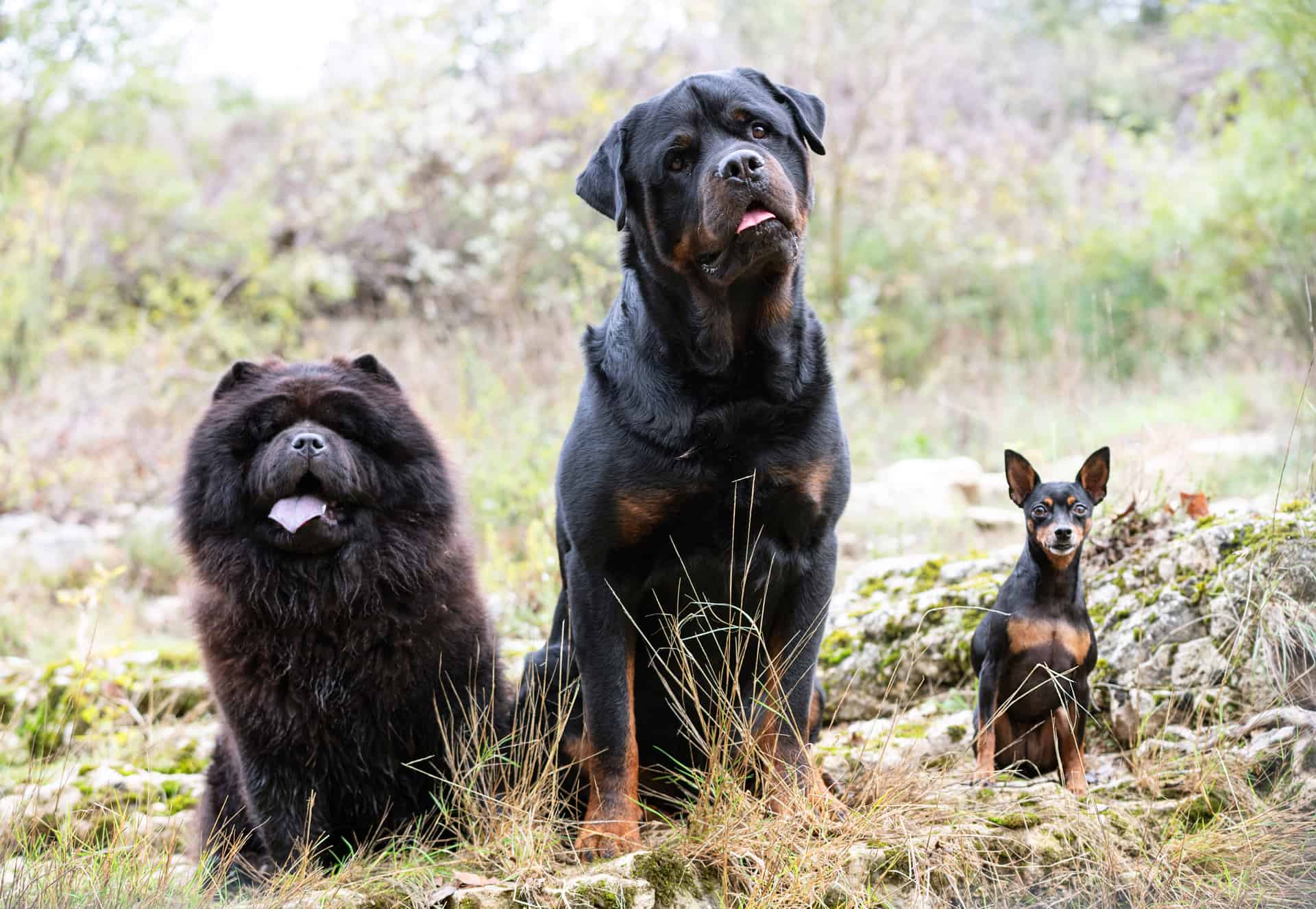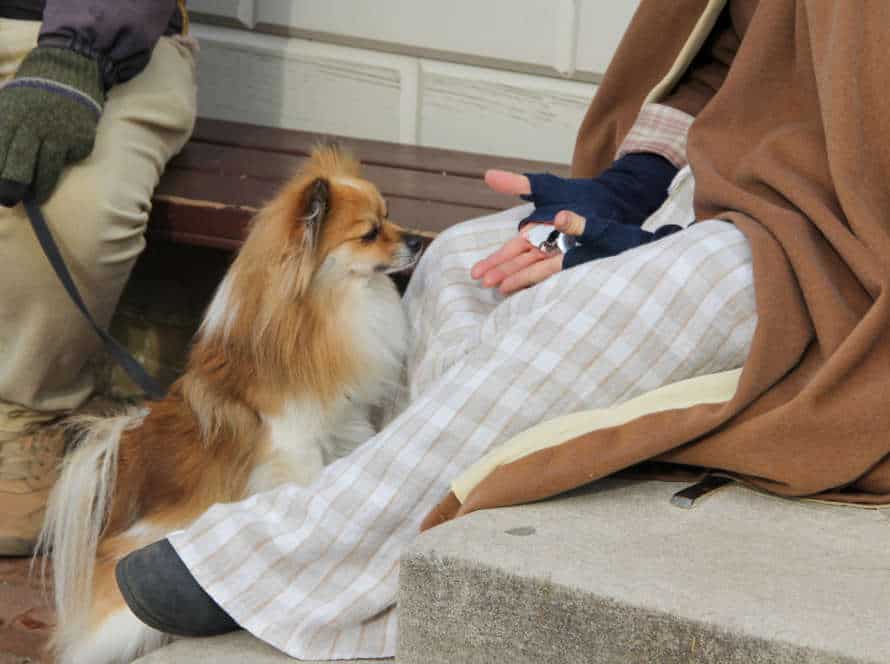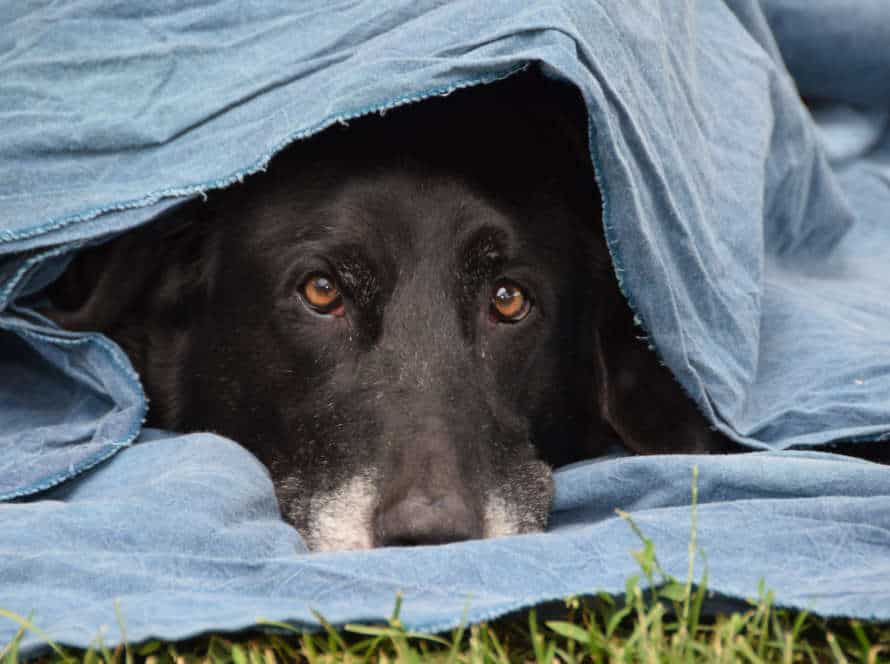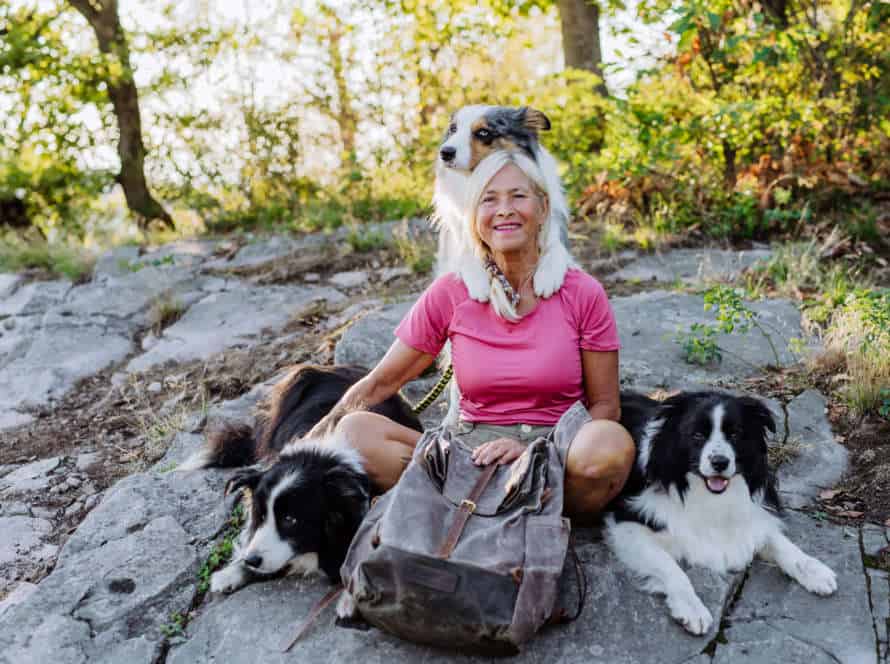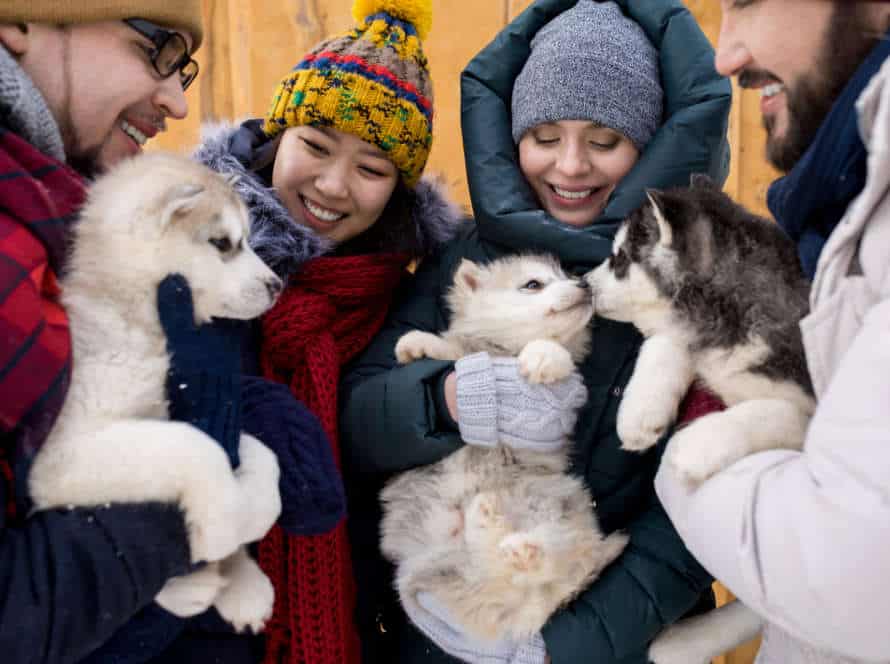Group Dynamics: Understanding Dog Social Hierarchy
Knowledge of a dog’s social hierarchy is key for pet owners. Dogs are pack animals, and each has a rank. Establishing your dog’s rank is done through body language, vocalizations and actions. You can help your pup and avoid issues by providing consistent training, making a routine and making sure there are no resource-based issues.
Pro Tip: Knowing the social order of dogs helps manage behavior and reduce conflict. With proper training and oversight, you can be the pack leader and allow your dog to trust and respect you.
The Basics of Dog Social Hierarchy
To understand the dynamics of a group of dogs, we need to comprehend the fundamentals of the dog social hierarchy. This hierarchy is based on roles, communication and dominance. Through this system, dogs can form social connections and deal with the complexities of their pack.
Definition of Social Hierarchy in Dogs
Dogs have a social hierarchy in their pack. Factors like age, size, strength and temperament affect it. Knowing the basics of this hierarchy helps with common dog behavior issues. Here are the key things to know:
- Dogs are pack animals and look to their leader for guidance and protection.
- They compete to establish social positions. This is done through physical contests and posturing.
- Body language and vocalizations are used to communicate social status.
- Owners should be pack leaders and provide consistent guidance and boundaries.
Understanding the hierarchy between dogs can create a safe and peaceful environment.
Importance of Social Hierarchy
Social hierarchy is key to comprehending dog behaviour and warding off aggression between groups of dogs. This concept is about ordering individuals in a group based on their social status, with the higher-ranking ones having more access to resources and benefits. Knowing this in dogs aids owners and trainers in creating an atmosphere of calm and order, reducing conflict and aggression.
Social hierarchies also give dogs a way to communicate and identify their roles in a group. Pet owners can recognise the dominant and submissive members of a group by studying dog body language and interactions. Establishing a stable social hierarchy in dogs decreases tension and encourages social unity, leading to happier and healthier dogs.
Comprehending social hierarchy is necessary for every dog owner to make a secure and healthy social space for their pets and stop aggressive behaviour.
Factors Influencing Dog Social Hierarchy
Grasping the elements that sway a dog’s social hierarchy is essential for keeping a peaceful group atmosphere among dogs.
These elements can be divided into three sections:
- Genetics: The breed, temperament, and other traits passed down from the parents can affect a dog’s ranking in the social order.
- Socialization: How a dog is socialized from a young age can have an effect on their behavior and position in the group.
- Environment: Their living conditions and day-to-day activities – including contact with humans and other dogs – can influence their place in the social order.
Studying the group dynamic and using positive reinforcement strategies can aid in forming and retaining a healthy social hierarchy among dogs.
How Does Dog Social Hierarchy Work
Dogs are social creatures. Each has their own spot in the pack. We can break down their social structure into multiple parts. Knowing the hierarchy helps us learn how they interact. This article explores the different levels of the dog hierarchy and how they communicate with humans and other dogs.
Body Language and Communication among Dogs
Body language is key for dogs when it comes to communication. Knowing about dog social hierarchy and group dynamics is really important for dog owners. It helps to avoid conflicts and keep a peaceful environment for their canine pals.
When meeting other pooches, watch their body language. It can tell you the status and mood.
Here are some clues:
- Ears: upright=dominant; flat=submissive/scared
- Tail: high/wagging=confident/happy; tucked=fearful/uncomfortable
- Eye contact: direct=assertive; averting=submissive
- Posture: tall with puffed up fur=dominant; lowered with submissive posture=subservience.
By understanding these body language signs and how they relate to dog social hierarchy, owners can better talk to their pup and other dogs they come across.
Understanding Dog Pack Order
Understand dog pack order for a strong bond with your pup. Pack order means how dogs communicate and decide who’s in charge. Factors such as age, size, experience, and temperament decide who’s the leader. Dominant dogs lead, while submissive dogs follow. Tips to maintain this order:
- Set boundaries and rules, reward good behavior, be the pack leader.
- Avoid aggression, understand your pup’s personality and adjust training.
With guidance and training, you can have a happy pack order at home.
Role of Aggression in Dog Social Hierarchy
Aggression is an important factor in dog social hierarchy. Dogs use it to establish and hold onto their rank in the pack.
A pack consists of multiple dogs, with a leader at the top. This is the strongest and most dominant dog. All other dogs below them in rank.
Dominant dogs will use aggression to show who’s boss – postures, vocalizations, and physical acts. Lower-ranking dogs use aggression too – to challenge higher-ranking dogs or to protect resources.
This knowledge is key for pet owners and dog trainers. It helps prevent and deal with any conflicts that may arise.
Examples of Dog Social Hierarchy
Dogs, like all mammals, create a hierarchy in their social groups. This is called the Dog Social Hierarchy. Knowing this is important to understand and control their behavior. Here are some examples. Each one shows how dominance and submission are expressed.
Dog Social Hierarchies in Wild
Dogs are social creatures that live in packs. They have a complex social hierarchy. In nature, this is essential for the pack’s survival. It can teach us a lot about a dog’s behavior. Here are some examples:
- Alpha: The alpha is the leader of the pack. They make decisions and keep order.
- Beta: The beta supports the alpha in decision-making and upholding the hierarchy.
- Omega: The omega is the lowest ranked and often gets picked on. They usually act submissive and are peacekeepers.
It’s important to understand dog social hierarchy. It can help us identify behavior issues and find the right training solutions.
Social Hierarchies in Domesticated Dogs
Dogs, much like their wolf ancestors, have social hierarchies.
They have developed intricate ways to interact with humans and other dogs. To train and socialize effectively, we must comprehend their group dynamics. Here are some examples of the dog social hierarchy:
- Alpha Dog: This individual holds the highest status in the pack. They display dominance by barking, snarling, or growling at others.
- Subordinate Dogs: These dogs hold lower rankings. Signs of submission can be seen in these animals, such as avoiding eye contact or rolling onto their back.
- Pack Mentality: Dogs are social creatures, and like to stick together. They will often follow the alpha’s lead – hunting, playing, and resting together.
Pro Tip: To successfully build trust and respect with your pup, be the alpha of the home. Use positive reinforcement and reward-based training to promote good behavior and discourage domineering or hostile behavior.
Understanding Social Hierarchy in Multi-Dog Household
In a multi-dog home, it’s important to know the social hierarchy. This structure can be complex. But, don’t think the biggest or most aggressive dog is always in charge. The one controlling resources, like food, toys and sleeping areas, has the most power. Dominance can be shown through body language, like standing tall, eye contact, and growling. It’s vital to recognize these signs to keep peace. In a successful social hierarchy, each pup knows their place and feels safe. If introducing a new dog, do it slowly and watch them to place them in the hierarchy.
Importance of Understanding Dog Social Hierarchy
In the canine world, social hierarchy is essential. It helps dogs live peacefully and manage conflict. This hierarchy is based on factors like size, age and gender. Pet owners, trainers and animal caretakers must understand it. Understanding dog social hierarchy is essential for a dog’s well-being and happiness. We will now discuss why it’s so important.
Benefits of Understanding Dog Social Hierarchy
It is essential to comprehend the social hierarchy of dogs, to foster healthy group dynamics and stop aggressive behavior.
Realizing the social order of dogs lets you recognize dominant and submissive behavior, and not disturb the natural order.
Advantages of understanding dog social hierarchy are:
- Becoming leader: Comprehending the social order of dogs helps you become the leader of the pack.
- Evading conflict: Knowing the hierarchy helps you to prevent conflicts between dogs and act accordingly.
- Pinpointing behavioral issues: Recognizing dog social hierarchy lets you identify dominant or submissive issues that can lead to aggression and take the necessary action.
By understanding the social hierarchy of dogs, you can be an effective pack leader and make sure your canine pals have healthy and enjoyable lives.
Preventing Dog Conflicts with Other Dogs and Humans
Preventing dog conflicts with other canines and humans is key for a pleasant and secure atmosphere. To accomplish this, you must comprehend dog social hierarchy and group behavior.
Dogs have a hierarchical system, which means they instinctively obey a leader and arrange dominance/submission among themselves.
Here are some hints to comprehend and control dog social hierarchy:
- Identify signals of a dominant/submissive dog.
- Train your pup to obey your orders and show you are the leader.
- Permit dogs to create their hierarchy without interference.
- Dodge stressful scenarios like overcrowding or lack of resources.
By understanding dog social hierarchy and group dynamics, you can prevent conflicts and make a safe and harmonious atmosphere for all.
Strengthening Dog-Human Bond through Understanding Social Hierarchy.
It’s important to comprehend dog social hierarchy for developing and increasing the bond between us and our dogs.
Same as us, dogs have a structured social order with complex interactions. Here’s what we should know about it:
- Dogs are pack animals and naturally create a social hierarchy in their group.
- The alpha dog is the one who decides, keeps order and makes decisions for the pack.
- A good-mannered dog knows and respects its place in the hierarchy. This understanding helps us communicate better, build trust and respect.
- To solidify the connection with your pup, you need to be the pack leader. Show confident, dominant behavior. Set rules and limits. Reward good behavior.
By understanding dog social hierarchy, we can cultivate a peaceful and cheerful relationship with our four-legged friend.
Frequently Asked Questions
1. What is social hierarchy among dogs?
2. How can I determine the social ranking of my dog in a group?
3. Can social hierarchy among dogs change over time?
4. What are the potential consequences of disrupting the social hierarchy of a group of dogs?
5. How can I prevent conflicts between dogs in a group?
6. What is the role of humans in the social hierarchy of a group of dogs?

